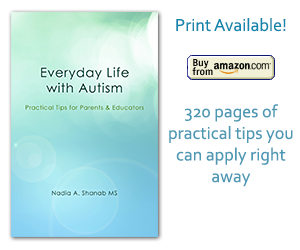Teach Empathy through Playing
Nadia Shanab | Uncategorized21 Jan 2013
Get your child her/his favorite doll, stuffed animal, movie character toy,…and create a story, a dialogue, or a senario of your imagination. Steer the conversation between you, your child, and the doll in the direction of the area you wish your child learns about. During the play pretend a situation that solicits sharing concerns, empathy, and compassion. Act out what you expect a typically developed person would say or do. You may choose topics like: a friend who had to go to the hospital, or an elderly neighbor who needs help, or a relative who is sad, or homeless people without shelter, or hungry people unable to buy food, disabled people who need help to get by…
Conversely, you may want to talk about sharing good moments and be happy for somebody’s happines. The purpose is to develop and make your child aware of her/his own feelings in order to be able to feel for others.
In addition to acting, you may use drawings, pictures and words to support your ideas.
Another effective way to teach empathy is by watching movies, where you can talk, explain, elaborate on a certain situation that calls for empathy. Pause the movie and talk about the situation, then resume, and so on. Children with ASD are so visual, we might as well take advantage of this huge strength.
It goes without saying, that through out the day, at home or at school, remember to practice having empathy and sharing concerns with peers, family, and community. For example: somebody gets hurt on the playground, somebody got his feelings hurt, a peer had to go home because she/he has fever…and so on.
In school we ask the students to write an apology letter or make a nice drawing if they hurt somebody’s feeling. Similarly, we ask them to write letters and draw pictures to celebrate birthdays. It is so simple, yet very important.
Remember that teaching to pretend in itself is a great practice, since most children with ASD lack this skill. Moreover, typically developed young children spend hours and hours in pretend plays and games with their dolls and all kinds of stuffed animals to replicate real life situations and experiences. It is part of the natural development process.
Pretending is a very valuable excersise to nourish, expand, and enrich the child’s imagination too.
Connecting the child with real life experiences is the best way to help them join the crowd off the spectrum.
nadia shanab
Tags: autism, awareness, communication, flexibility, parenting, social interaction
